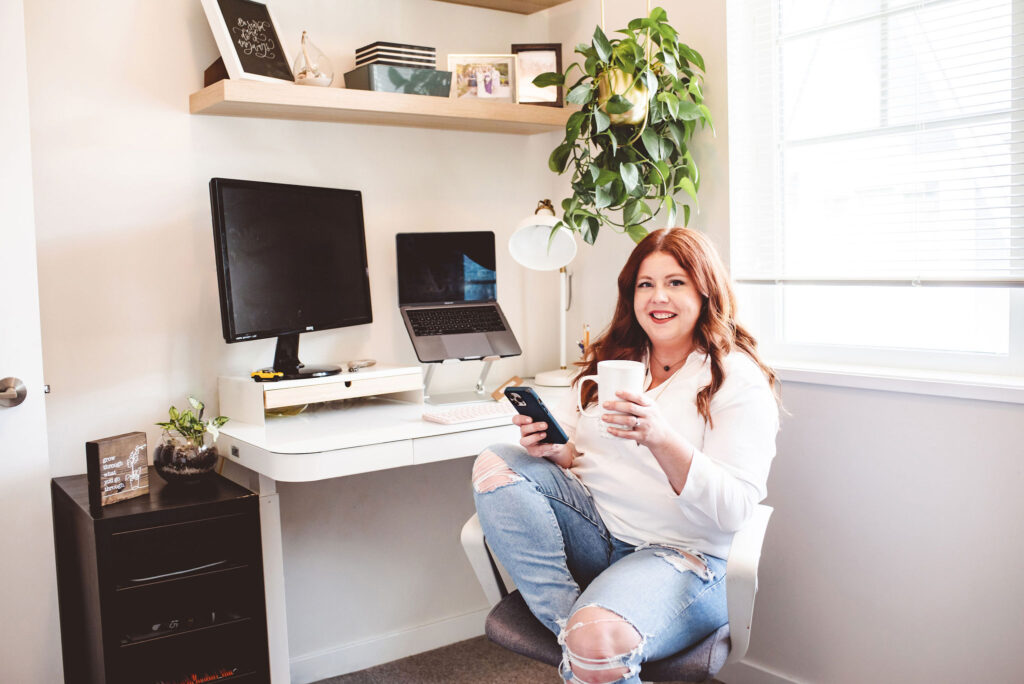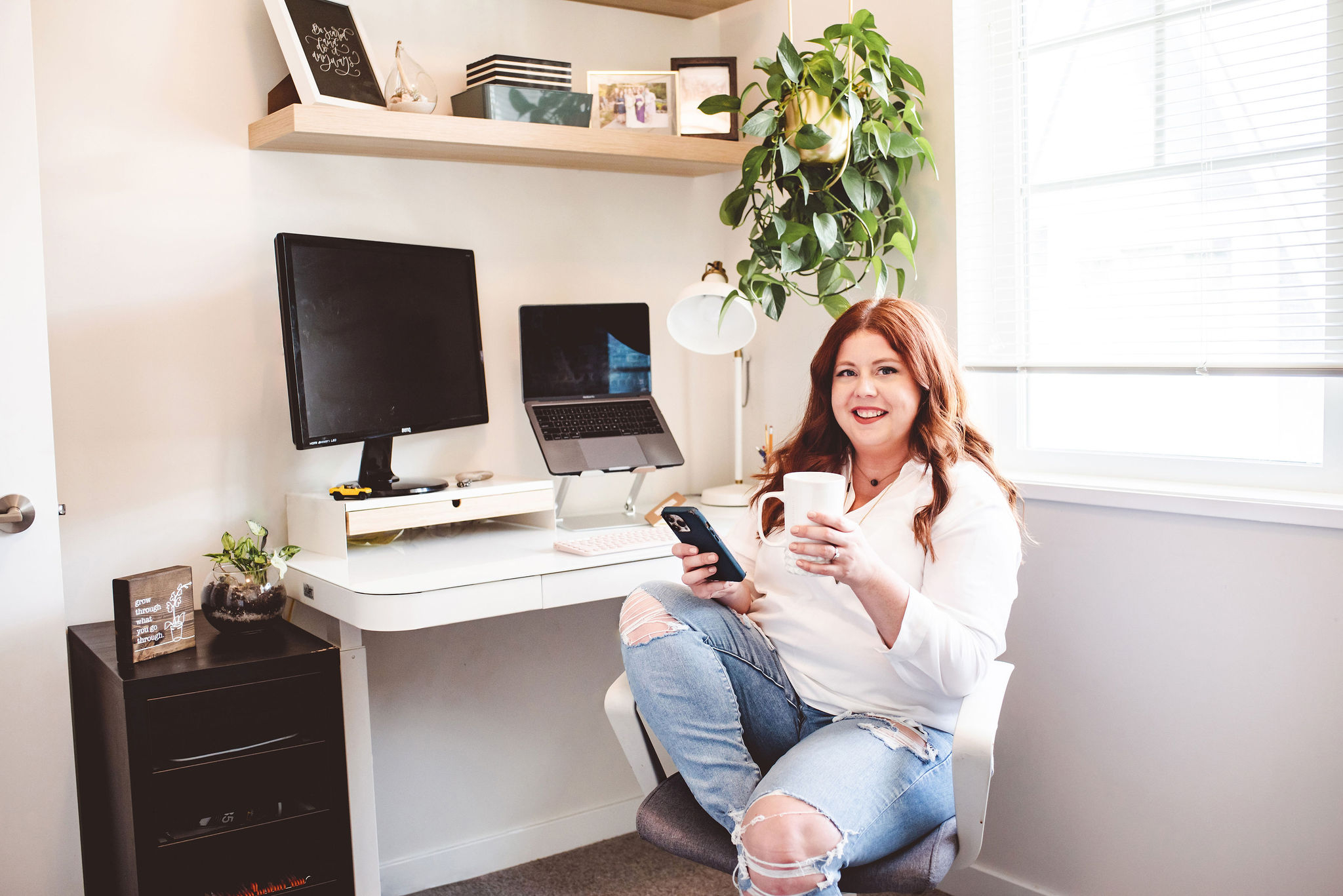Mindful eating is more than a buzzword. It is a way to bring gentle awareness to how we eat and how we feel. Mindful eating helps us connect with our body, our hunger, and our joy. Many people expect it to be strict or perfect. Let’s clear up those misunderstandings and show what mindful eating really looks like.
Hi, I’m Dr. Meredith MacKenzie, a binge eating therapist, intuitive eating coach, and creator of the One Body To Love program. If you’re feeling unsure about how to actually practice mindful eating or frustrated that it doesn’t look the way you expected, you’re not alone. This work is about connection, not perfection. I’d love to hear from you. You can reach out anytime or come connect with me over on Instagram for more real talk, resources, and encouragement.
What Is Mindful Eating?
Mindful eating means paying attention to the food you eat, and how you eat it. It’s about tuning in to hunger, fullness, taste, and emotion. You begin to notice your body’s signals and your mind’s thoughts. Instead of rules or guilt, it invites calm and curiosity around food.
Now, let’s set the record straight on mindful eating myths so you can feel more confident in your journey.
Curious what a truly healthy relationship with food looks like? This video walks you through what that can feel like in real life, no rules required.
Myth #1: Mindful Eating Is About Eating Less
Many people think mindful eating means eating less or that it is a diet in disguise. That is not true. Mindful eating has nothing to do with how much you eat. Standing in front of a meal, you may feel hungry or full. Mindful eating helps you observe that. It supports honoring your hunger, not shrinking it.
If you eat more of something you enjoy, that is okay. If you eat less, that is okay. The goal is to notice why you choose what you choose. Is your body asking for food, or is something else going on? Are you feeling afraid of weight gain? Could it be exhaustion or stress instead? Mindful eating gives you the space to notice that, without shame.
Myth #2: You Have to Eat Slowly and Perfectly Every Time
You can relax here. Mindful eating does not demand perfect speed or ritual. It does not ask you to chew exactly twenty times, or put your fork down between bites. That adds pressure, and pressure fuels more disconnection.
Sometimes you may eat slowly, maybe because you are focused or relaxed. Sometimes you eat quickly, maybe because you are busy or stressed. That is part of real life. Mindful eating is about noticing how you eat, not forcing a rhythm.
If you eat fast, you can pause for one breath. Notice the flavor or texture of your food. That tiny pause is a mindful moment. You don’t need a perfect environment. You only need a breath, a moment, and your curiosity.
Want a simple way to start tuning in to your hunger, fullness, and emotions around food? Download my free Mindful Eating Log and begin exploring your patterns with curiosity and care.

Myth #3: Mindful Eating Is Only About Food
This myth builds a wall between eating and living. The truth is that your mood, your stress, your day, your relationships, all affect how you eat. Mindful eating is about noticing everything that comes with the meal.
You might come to the table tired or anxious. Other times, it’s after a fight, a long day, or hours spent trying to keep everyone else happy. And sometimes, you’re celebrating or seeking comfort. All those feelings matter. If you ignore them and just focus on the food, you miss key information. Mindful eating invites you to notice your emotions, the pace of your day, body tension, and hunger. It’s about understanding the full picture, not just what’s on your plate.
Myth #4: You’ll Instantly Know What and How Much to Eat
It is tempting to expect clarity right away. Many people come to mindful eating hoping it will instantly reveal the perfect meal plan or exact portion. But clarity doesn’t always arrive on day one.
Mindful eating is a practice. It unfolds in time. At first, you may feel confused or uncertain. That is normal. You may ask yourself: “Am I hungry or bored?” “Am I full or anxious?” “Why do I want that piece of cake?”
Over time, you build trust with your body. Patterns in hunger and fullness start to make more sense. Emotional triggers become easier to spot. These insights weave together slowly.
Want to see what a peaceful relationship with food can actually look like? Watch this video.
What Mindful Eating Actually Looks Like
Mindful eating looks different for each person. Here are a few ways it can show up:
- Noticing Hunger and Fullness
You pause before your first bite. You ask, “Am I hungry? Not hungry? Somewhere in between?” You might take a sip of water. You tune into your body, not rules. - Checking In Mid‑Meal
You notice midway through a plate, “How are my tastes? Am I still enjoying this? How is my belly feeling?” You decide whether to keep going or pause. - Handling Cravings with Curiosity
A craving may arise. You don’t judge it. You ask, “Where is this craving coming from? Am I hungry? Tired? Stressed?” Then you decide with that awareness. - Noticing Emotions
You sense anxiety, sadness, joy, or boredom. You name it softly. You might choose to eat, pause, or move through the emotion in another way. You use food in thoughtful partnership. - Recovering from Mistakes
You may lose awareness sometimes, like you binge, or you restrict, or you rush. When that happens, you simply bring your attention back. You reflect: “What got in the way? Am I okay now?” You don’t shame yourself. You gently begin again.
Here are some tips to recover from mistakes without spiraling into shame: Breaking the Shame Cycle After Emotional Eating.
Mindful Eating FAQs
You might still have questions about how mindful eating works in real life. That’s completely normal, most people do. Let’s walk through some of the most common questions I hear.
What if I forget to be mindful until after I’ve already eaten?
That’s okay. Awareness after the fact still counts. You might reflect: “I was really hungry, no wonder I ate fast,” or “I noticed I ate because I was stressed.” Every reflection builds awareness.
Can mindful eating help with binge eating?
Yes, but not in the “just be mindful and stop binging” kind of way. Mindful eating helps you notice what’s driving the binge (hunger, restriction, emotions, or stress) so you can respond with compassion instead of shame.
What if mindful eating feels too hard or unnatural?
That’s normal at first. Diet culture trains us to ignore our bodies, so tuning back in can feel uncomfortable. Think of it as building a muscle. Small, gentle steps over time add up.
What if I still want to lose weight?
That’s a common and understandable desire in a culture that pressures us to shrink our bodies. Mindful eating isn’t a weight-loss tool but it can help you feel calmer, more connected, and more trusting of your body, whatever its size.
Feeling out of control around food? This video offers simple ways to get grounded and reconnect with yourself in those overwhelming moments.
This Is What Progress Looks Like
You don’t have to eat perfectly. You don’t need to slow down every time or get it “right.” This is not about control, it’s about connection. This is a skill, not a rule. Some days it comes easily. Other days, not so much. What matters is showing up with curiosity, not shame. You deserve to feel at ease with food. You deserve to trust your body. And you’re allowed to take it one small step at a time.
If today’s blog left you wanting more support in making peace with food without chasing perfection, you’re in the right place.
My group coaching program, One Body To Love, offers a supportive, judgment-free space to help you step out of survival mode, release self-blame, and reconnect with your body in a way that feels safe and sustainable.
If you prefer to move at your own pace, you might begin with Food Freedom in a Weekend, my self-paced course designed to help you shift out of all-or-nothing eating patterns.
For deeper, more personalized support, 1:1 coaching offers space to explore the emotional roots of your eating with compassion and curiosity. Not sure which option is best for you? You can book a free discovery call and we’ll figure it out together.
And if you’re just getting started, check out my free resources. You’ll find my YouTube channel, the One Body To Love podcast, and a collection of helpful downloads and book recommendations to guide you.
